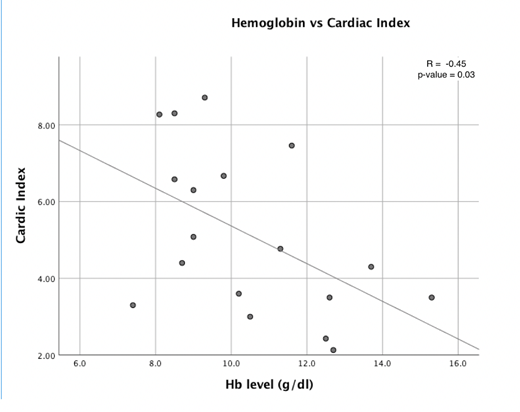
OBJECTIVE:Patients with hereditary hemorrhagic telangiectasia (HHT) and liver arteriovascular malformations (AVMs) may develop high output cardiac failure. Iron deficiency anemia is common in HHT patients and is believed to adversely impact cardiac index (CI) but has not been systemically studied in this population. We performed a retrospective study to assess the relationships among hemoglobin, iron, and CI.
METHOD:Chart records were reviewed of HHT patients with liver AVMs who were seen at Yale HHT Center from 2003-2019 and who had undergone cardiac catheterization with calculation of CI. For each patient, clinical history, laboratory studies, and CI were recorded. All variables were categorized according to median of interquartile range and analyzed using Spearman's correlation coefficients.
RESULT:Seventeen patients with HHT and liver AVMs were identified who had undergone cardiac catheterization. Median age was 68 years (range, 36-85); 15 were female and 2 males. Median values of hemoglobin, ferritin, and CI were 10.6 g/ld., 35 ng/mL, and 4.77L/m/m2, respectively. A statistically significant, inverse correlation between hemoglobin and CI was observed (R = -0.45, P = 0.03). Serum iron and CI were also negatively correlated although the association was not significant (R = -0.3, P = 0.17). No significant correlation of serum ferritin with CI was seen (R = 0.05, P = 0.8).
CONCLUSION:Anemia is negatively correlated with CI in HHT patients with liver AVMs. The impact of iron indices on CI is uncertain and partly limited by our small sample size. Larger studies incorporating multivariable analyses are warranted.
No relevant conflicts of interest to declare.
Author notes
Asterisk with author names denotes non-ASH members.

This icon denotes a clinically relevant abstract


This feature is available to Subscribers Only
Sign In or Create an Account Close Modal